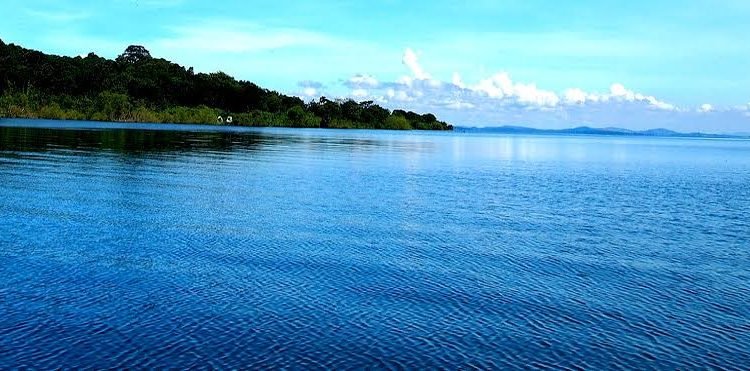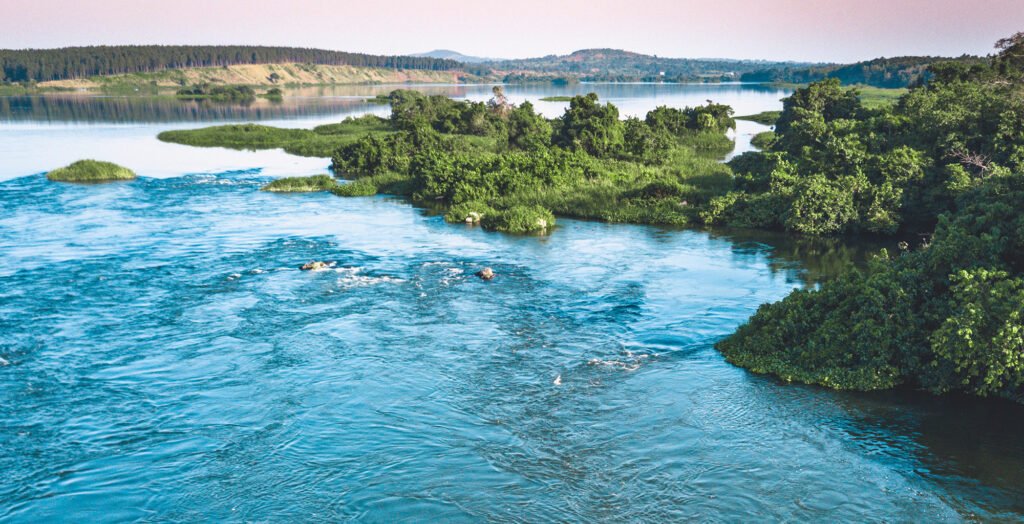Lake Victoria is the largest inland lake in Africa and the largest tropical lake in the world. Covering a surface area of 68 800 square kilometres, this Great African Lake is located in East Central Africa and lies nestled in an ancient basin on the borders of three countries: Tanzania, Uganda, and Kenya.
The mighty lake lies in a shallow depression between the Western and Eastern Rift Valley and is made up of several archipelagos that are shared between the three countries. The two most stunning attractions in the Lake Victoria Basin are Rubondo Island National Park which is the largest island park in Africa and the Ssese Islands which is a spectacular archipelago made up of 84 islands.
Lake Victoria supports a thriving fishing and agricultural industry as well as a busy transport industry. Agricultural activities include coffee, maize, tea, and coffee farming on either a subsistence or commercial level. There are 500 recorded fish species in Lake Victoria, including the infamous Nile Perch which is an invasive species that was introduced in the 1950s.
Discover more here on our website www.globalafricantimes.com

A tour of Lake Victoria appeals to nature lovers and outdoor enthusiasts. It’s also an opportunity to learn more about the people of Lake Victoria. The Great Lake is conveniently located near the major safari game reserves in Tanzania and Uganda and is the perfect add-on destination for people who travel to those regions to see the gorillas or the annual wildebeest migration.
The History
Lake Victoria was discovered by John Hanning Speke in 1858 on his famous quest to find the source of the Nile, along with his travel companion Richard Francis Burton. Speke named it Lake Victoria after the reigning Queen of England. At the time, Speke caused much debate in the scientific community by claiming Lake Victoria was the source of the Nile River. Its existence was confirmed by the Welsh-American explorer Henry Morton Stanley who at the time circumnavigated the lake and reported the great outflow was at Ripon Falls on the northern shore of Lake Victoria.
Prior to Speke’s arrival, Lake Victoria was well-known to the Arab traders who explored the inland routes in search of gold and ivory as well as sourced slaves from the region. An ancient map of the lake has been discovered and dates back to approximately 1160 AD.
The coastline of Lake Victoria covers an area of 5 180 square kilometres (2,000 miles). It’s incredibly diverse; ranging from 90-metre-high cliffs and dense papyrus swamps at the delta of the Kagera River to the flat and barren shores of the channel to the Gulf of Kavirondo and Winam Gulf.
Lake Victoria is famous for a group of islands known as the Ssese Islands. This incredible archipelago is made up of 84 islands and is located in the northwestern part of Lake Victoria which falls within Uganda.
Lake Victoria is moderately shallow and its volume of water is less than other great lakes in Africa which have a considerably smaller surface areas. As much as 85% of the water that fills Lake Victoria is provided by rainfall and about 15% of the water is lost to evaporation.
Kagera River is the largest river that flows into Lake Victoria. Two rivers flow out of the great lake: White Nile or Victoria Nile and Katonga River.
Victoria Nile leaves the lake at Ripon Falls near Jinja and flows in a northern direction for 500 kilometres. After it falls over Murchison Falls, it flows into Lake Albert and onto the Albert Nile. This is the last part of the river in Uganda before it enters Sudan.
The only river that flows out of Lake Victoria is the famous Nile River. In terms of contributed water, Lake Victoria is the primary source of the longest branch of the Nile River. It’s estimated that Lake Victoria formed over 400,000 years ago. The surface area of Lake Victoria is about 800 square kilometres (26 600 square miles) and it has a 3 440 kilometre-stretched shoreline.
In total, there are over 3,000 inhabited islets in Lake Victoria.
In terms of volume, Lake Victoria is the 9th largest continental lake in the world. It contains approximately 2 424 cubic kilometres of water. Lake Victoria has a maximum depth of between 80 to 84 metres (262 to 275 feet) and an average depth of 40 metres (130 feet). And its surface area is divided among three countries: Kenya, Uganda, and Tanzania.

Lake Victoria is marketed as ‘The Pearl’ or ‘Pride of Africa’. It’s one of the greatest lakes in the world and is renowned for its spectacular beauty, lush tropical islands, and beautiful beachside hotels and resorts. There are over 200 fish species in Lake Victoria which makes it a sought-after destination for a fishing tour in Africa.
The number of tourists visiting Lake Victoria has increased over the years because the region is benefitting from improved infrastructure and an increase in investment in the hospitality industry. You’ll find a wide selection of accommodations in the Lake Victoria basin, ranging from rustic fishing camps to private resorts, safari lodges, and modern hotels.
Lake Victoria is also rich in history and has a substantial number of heritage sites as well as a significant archaeological site. The vast network of islands are home to incredible bird species which makes the lake region a birder’s paradise. It spreads out over the borders of Tanzania, Uganda, and Kenya and is close to Serengeti National Park in Tanzania and other world-renowned safari destinations in East Africa. It’s a popular add-on destination after a Big 5 safari tour to the Serengeti and the other famous game reserves in East Africa.
Hundreds of thousands of travellers visit Lake Victoria every year despite the fact that certain media sites will tell you it’s one of the most dangerous destinations in Africa. Here you have to look at the travel data – or lack of them – and decide for yourself if a holiday in Lake Victoria is worth it.
And you definitely have to pay a visit too…
Stay tuned for more African Tavel Destinations
Additional Sources: Mo Afrika Tours




